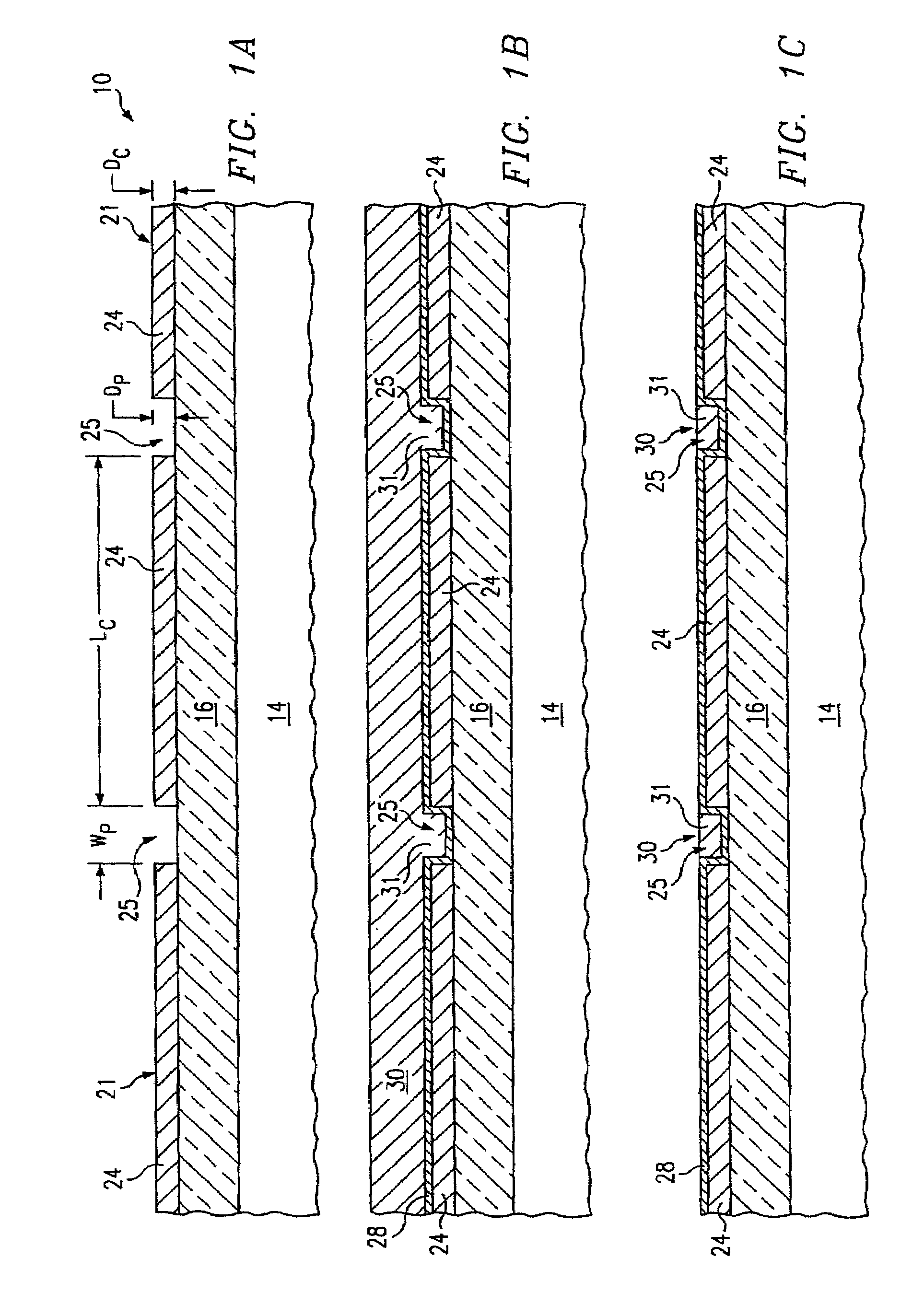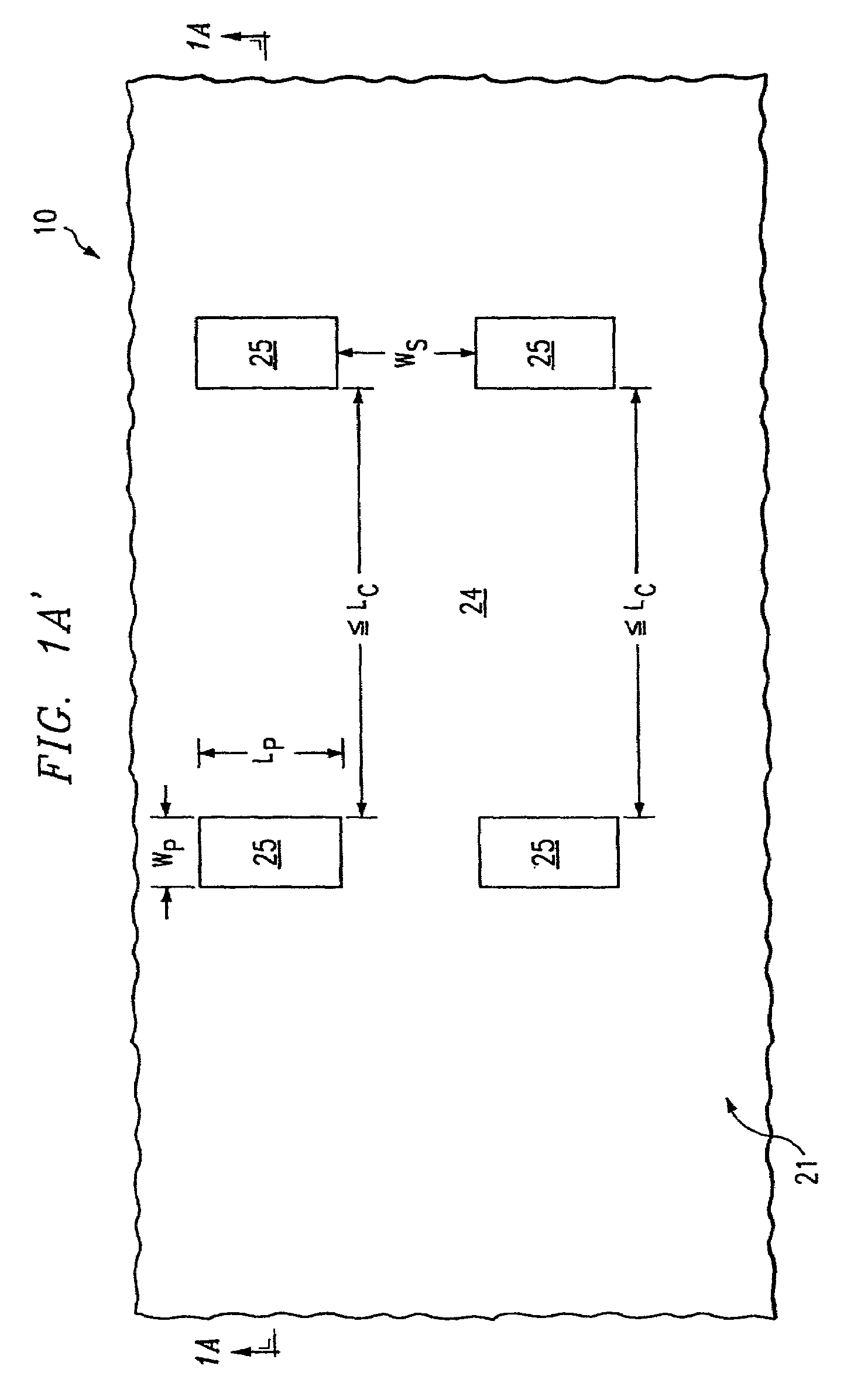Method of forming electrical interconnects having electromigration-inhibiting segments relative to a critical length
a technology of electromigration inhibition and critical length, which is applied in the direction of resistive material coating, solid-state device coating, metallic material coating process, etc., can solve the problem of not ensuring unable to perform photolithography to align stacked strips, and unable to achieve the dimension control required to fabricate devices with submicron feature size, etc. problem, to achieve the effect of reducing the overall resistance increase caused by the electromig
- Summary
- Abstract
- Description
- Claims
- Application Information
AI Technical Summary
Benefits of technology
Problems solved by technology
Method used
Image
Examples
Embodiment Construction
[0034]Referring now to FIG. 1A, a semiconductor structure 10 is shown having a silicon layer 14, and a silicon dioxide layer 16 as shown. A 0.6 micron thick film, or layer 24 of a relatively high electrically conductive material, here an aluminum-copper (Al—Cu) alloy is evaporated over the surface. Other material may be used for film 24, such as Al, Cu, Au, Ag, or their alloys, i.e. the electrically conductive film 24 need not be immune to electromigration. The film 24 alternatively may be a multi-layer structure having one or more additional layers made of conductive materials, such as indicated above, and / or refractory metals or their compounds, such as Ti, W, TiN, TiW, Mo, Ta, or others, which are known to be immune to electromigration at typical operating conditions of silicon integrated circuits. It is noted that the upper surface of film 24 is a planar surface 21.
[0035]Multiple equidistant rows of windows are formed so that they are aligned along the desired paths of conductor...
PUM
| Property | Measurement | Unit |
|---|---|---|
| lengths | aaaaa | aaaaa |
| lengths | aaaaa | aaaaa |
| critical length Lc | aaaaa | aaaaa |
Abstract
Description
Claims
Application Information
 Login to View More
Login to View More - R&D
- Intellectual Property
- Life Sciences
- Materials
- Tech Scout
- Unparalleled Data Quality
- Higher Quality Content
- 60% Fewer Hallucinations
Browse by: Latest US Patents, China's latest patents, Technical Efficacy Thesaurus, Application Domain, Technology Topic, Popular Technical Reports.
© 2025 PatSnap. All rights reserved.Legal|Privacy policy|Modern Slavery Act Transparency Statement|Sitemap|About US| Contact US: help@patsnap.com



